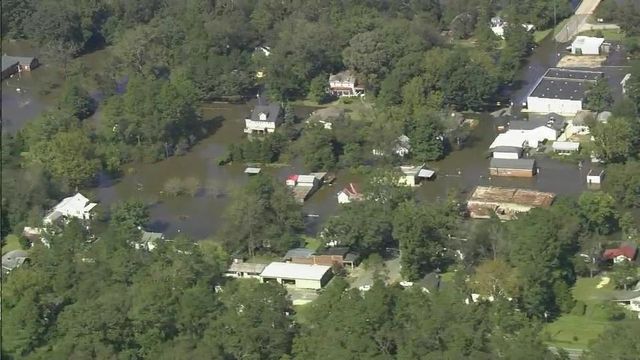Johnson: 100-year floods can happen close together
Generally speaking, a 100-year flood means there's a 1% chance in any given year that you'd see that kind of flooding at that spot. A 500-year flood means there's a 0.2% chance in a given year you'd see that kind of flooding.
Posted — UpdatedAs the flood waters from Hurricane Matthew move farther toward the coast, it’s natural for us to compare this storm and its flooding to Hurricane Floyd. One way people often talk about flooding is by using recurrence intervals, things like “this was a 100-year flood”.
Some things these numbers do not mean: It does not mean those floods only happen every however-many years. It’s also important to note that just because it was a 500-year flood in one place doesn’t mean it was a 500-year flood at other places, even on the same river. Nor does it mean that you can’t have two 100-year floods close together (as seems to have happened in areas north of Fayetteville in the last few weeks). Nor does it mean that a 100-year flood in one place wasn’t as or more impactful than a 500-year flood somewhere else. Recurrence intervals are exclusively statistical… impacts involve us humans, including where we build our homes and live our lives. A 50-year flood that chases you out of your home is far more impactful than a 500-year flood that floods open land but doesn’t affect where we live, work, and play.
Generally speaking, however, the flooding from 1999 (including Floyd and the other storms that struck that year):
- Tar River at Tarboro (incl. Princeville) was a 500-year flood (red dot on the map below)
- Neuse River at Princeton was a 500-year flood (red dot)
- Cashie River at Windsor was a 500-year flood (red dot but not highlighted)
- Tar River at Rocky Mount was at least a 100-year flood (purple dots)
- Neuse River at Goldsboro was at least a 50-year flood (yellow dot)
- Neuse River at Kinston was a 50-year flood (yellow dot)
There were also a number of additional that flooded at the 500-year flood level, including Ahoskie, Chinquapin, Enfield, Freeland, Gum Branch, Hilliardston, Hookerton, Shine, Trenton, Union, and White Oak.
Copyright 2024 by Capitol Broadcasting Company. All rights reserved. This material may not be published, broadcast, rewritten or redistributed.






